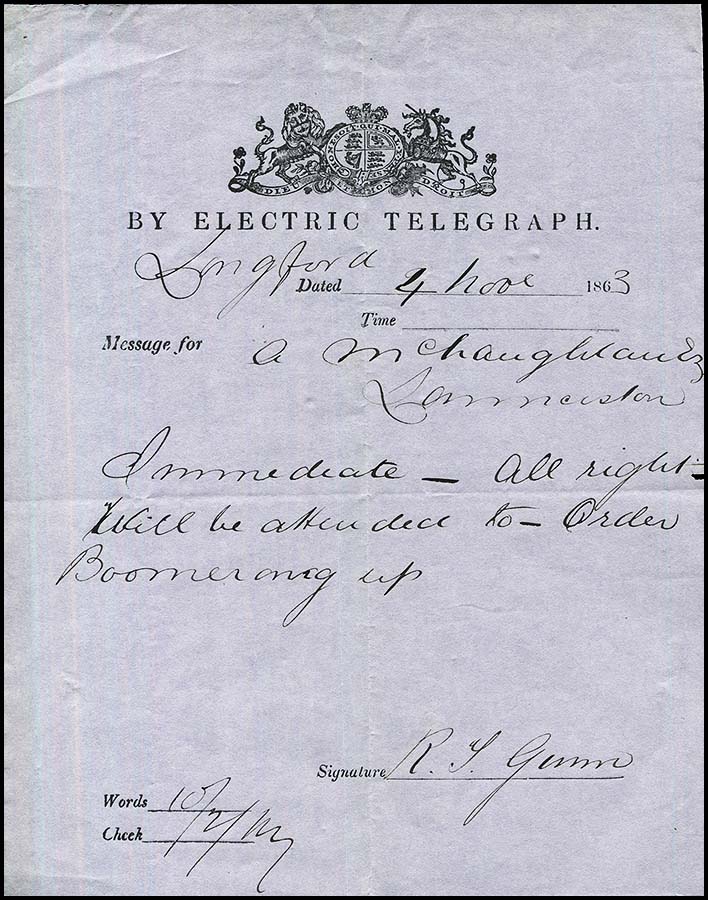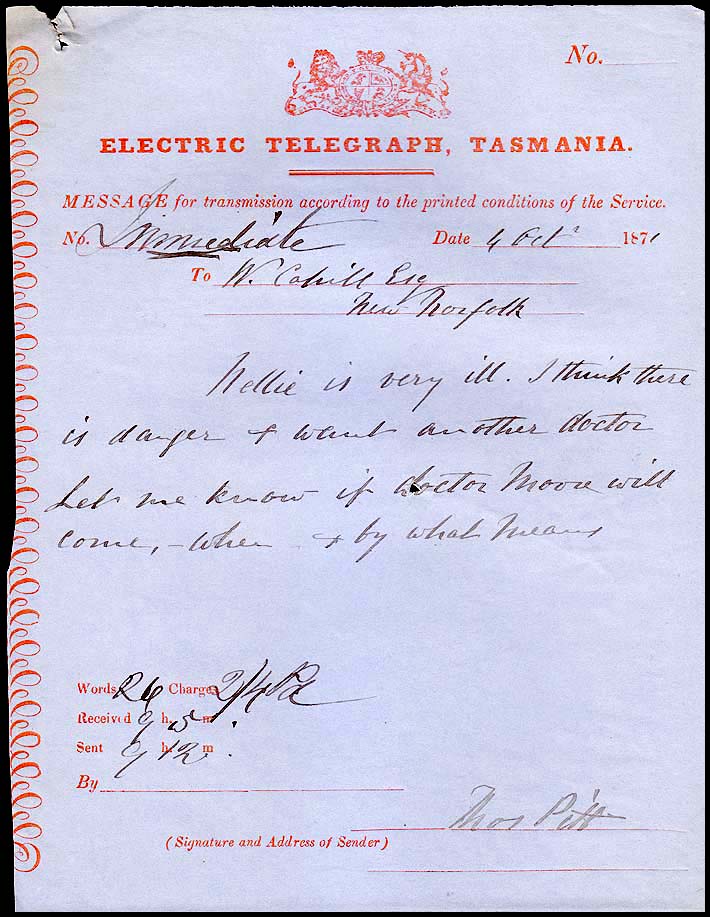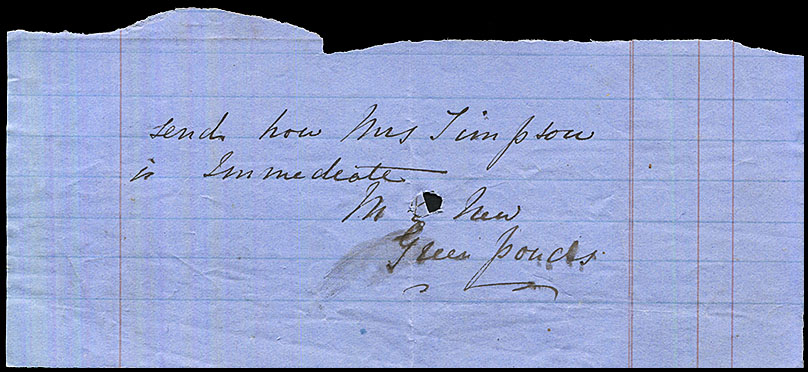Instructional marking - IMMEDIATE or URGENT.
- Australia 1901-1988
- New South Wales
- Queensland
- South Australia
- Tasmania
- Victoria
- Western Australia
- International
- Special aspects
When the telegraph system began in Tasmania, there was no need for a special rate to be levied on messages which had to be transmitted quickly. There was ample time to tramsmit all messages. As the telegraphic system became to be used more widely, messages took longer before they were transmitted. Hence the public (and some private and Government organisations) started to use a word which implied that this message should be transmitted and delivered as quickly as possible.
There were three main stages in Tasmania's Colonial period which describe the development of what later became called the URGENT RATE TELEGRAM.
Stage 1: Use of a descriptive word.
In the 1860-1880 period (approximately), messages which should be sent quickly were annotated with IMMEDIATE.
The earliest use of this annotation in Tasmania is recorded for a delivery form sent from Longford to Launceston (TC-DO-1B) on 4 November 1863.
|
Two other examples of this annotation are:
|
|
Stage 2: Use of a special form.
Tasmania and Queensland were unique amongst the Australian Colonies in that they both introduced a special form for URGENT RATE telegrams in the 1890s.
The Tasmanian Transmission form (TC-TU-1) and the associated Delivery form (TC-DU-1) are included elsewhere.
Stage 3: Urgent rate delivery forms during the Interim period.
Four formats for Urgent Rate delivery forms were issued during the Interim period in Tasmania. They can be accessed elswehere.


